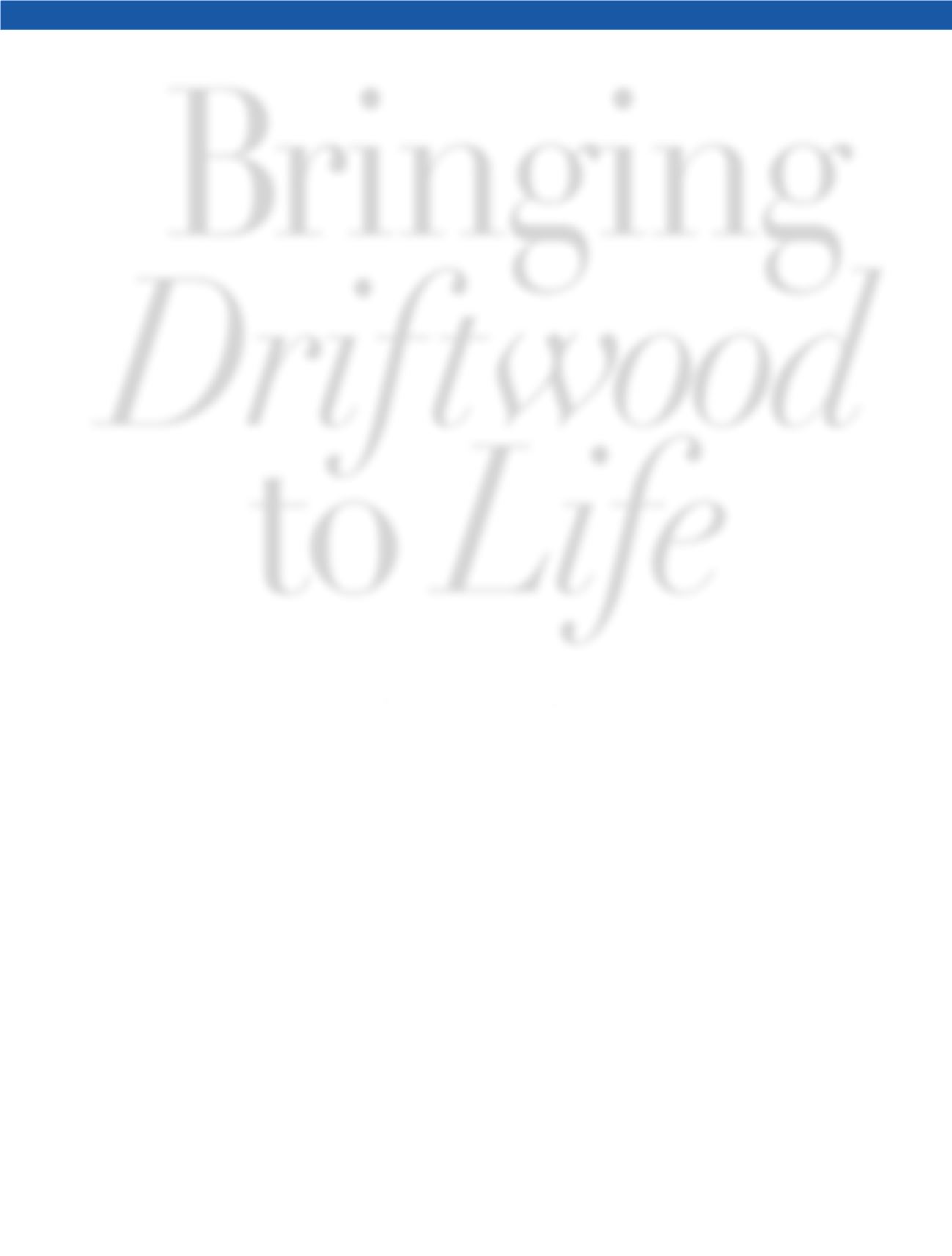

By Brian Sherman
73
www.MountPleasantMagazine.com|
www.BestOfMountPleasant.com|
www.ILoveMountPleasant.comBringing
Driftwood
to
Life
M
any people relocate
to the Lowcountry to enjoy
the magnificent weather, take
advantage of an almost endless
array of water-related outdoor
activities and bask in the area’s
historical significance.
Though these reasons might have provided the impetus
initially for his move from Columbia to Mount Pleasant
four years ago, Bob Humphrey has discovered additional
motivation to make his permanent home along the
Carolina coast. The flotsam and jetsam that is carried
to the shore each day, courtesy of the roiling Atlantic, is
the foundation of a hobby that now fills his garage and
consumes the bulk of his spare time.
Humphrey, also known as the Charleston Fishman,
has a garage full of driftwood that he’s collected at
beaches, bays and inlets along the Atlantic coast, mostly
on Sullivan’s Island but also where the sea meets the
sand on the Isle of Palms, Pawleys Island and in a few
places in downtown Charleston. His original plan was
to make furniture out of wood that had washed ashore –
which he did for a while. He built some benches and an
entertainment center that adorn his home. But Humphrey
soon changed direction when he discovered that it didn’t
take all that much creative thought to imagine a chunk of
driftwood as a specific fish or animal.
“One day I was walking along the beach, and I found
a piece of driftwood that to me looked like a mahi, so I
decided to try it out,” said Humphrey, who cleans, dries
then paints his creations in his garage workshop in the
Sweetgrass subdivision in Mount Pleasant.
He never cuts or carves a piece of driftwood, preferring
instead to work with his raw material in whatever form he
finds it. He will, however, connect two or more pieces with
screws or dowels. Maybe a long, narrow piece of driftwood
needs to be complemented by a shorter piece that
resembles a fin, or a pointed chunk of wood that looks like
The CharlesTon Fishman
















